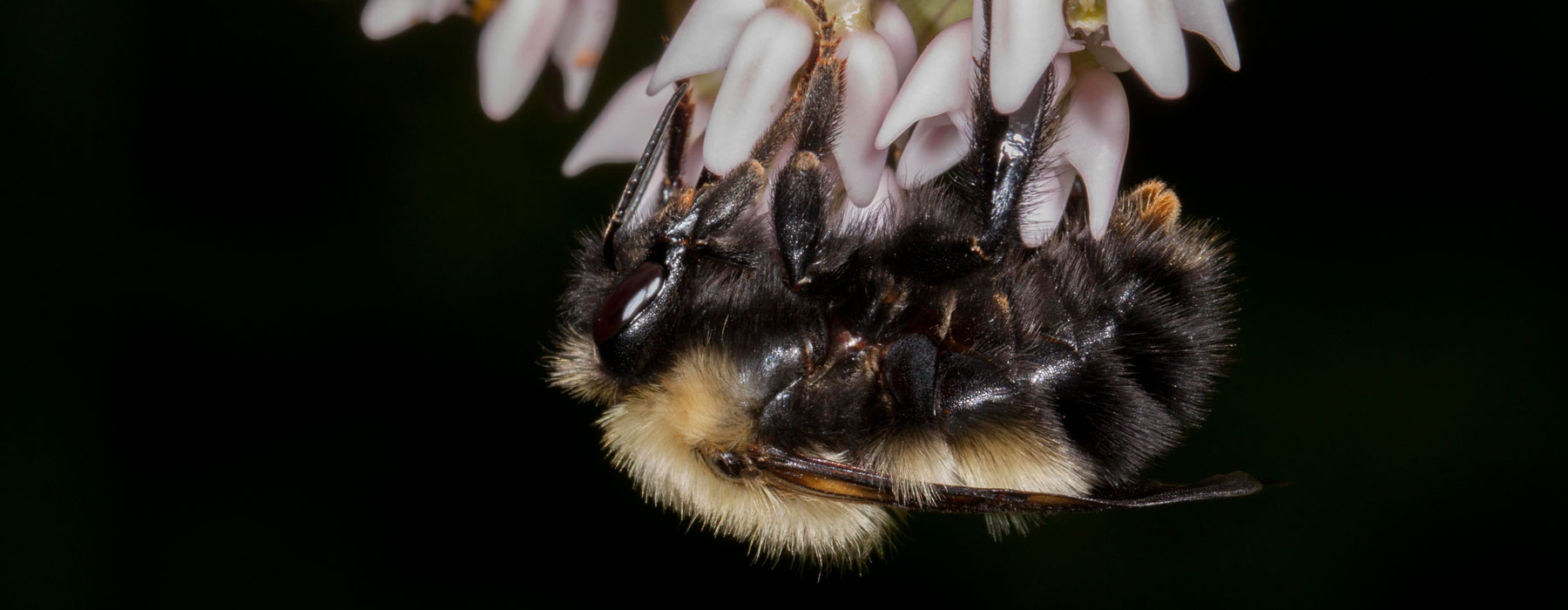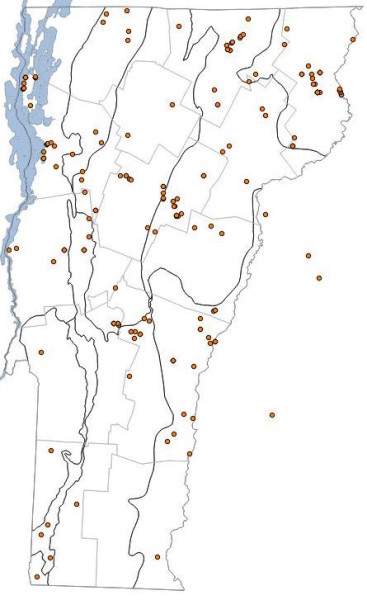This common species can be found from the northernmost part of Maine down to the northeastern tip of Georgia. Queens emerge in early spring and colonies can active through September, but are often gone by August or even July. While this species has shown a slight decline in Vermont, its populations appear stable in other parts of its range.
Select food plants: Hydrangea, Rhododendron, Rubus, Vaccinium, Lonicera (Honeysuckles), Prunus, Ribes
Tongue Length: medium
Nest: nests on surface of ground and in hollow logs and trees
Similar Species: B. vagans
General Phenology:
queens: April – September
workers: May – September
males: June – October








